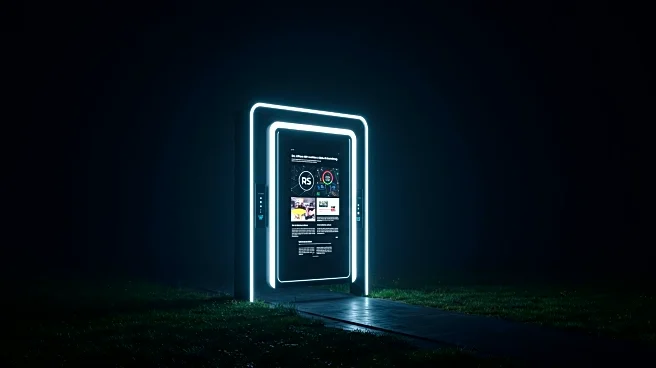What's Happening?
The WARC report on the future of programmatic advertising reveals a significant shift towards walled garden platforms, as spending on the open internet stagnates. Advertisers are increasingly adopting cookie-free strategies, with first-party data and contextual advertising gaining popularity. The report highlights a 14% increase in spend efficiency on programmatic campaigns since 2023, as advertisers seek more transparency and control. Key growth areas identified include retail media, connected TV (CTV), and digital out-of-home (DOOH) advertising. Programmatic curation is becoming mainstream, with curated deals driving higher ROI. However, these deals can lead to higher costs and lack of visibility for advertisers and publishers. AI-powered brand safety tools are evolving to provide more precise content analysis, enhancing trust and transparency in the programmatic ecosystem.
Why It's Important?
The shift towards walled garden platforms in programmatic advertising has significant implications for advertisers, publishers, and consumers. As advertisers seek more control and transparency, the focus on quality and brand-safe inventory is likely to increase. This could lead to better advertising outcomes and more revenue for publishers. The rise of programmatic curation and AI-powered brand safety tools represents a move towards more accountable and collaborative advertising practices. These developments may enhance consumer experiences and drive innovation in digital advertising. However, the higher costs associated with curated deals and the lack of visibility could pose challenges for advertisers and publishers, necessitating new strategies to balance transparency and efficiency.
Beyond the Headlines
The evolution of programmatic advertising towards walled garden platforms and curated deals reflects broader trends in digital marketing, including the increasing importance of data privacy and brand safety. As advertisers navigate these changes, ethical considerations around data usage and consumer privacy are likely to become more prominent. The integration of AI-powered tools in brand safety strategies may also raise questions about the role of technology in shaping advertising practices and consumer experiences. These shifts could lead to long-term changes in how advertisers approach digital marketing, with implications for industry standards and regulatory frameworks.











